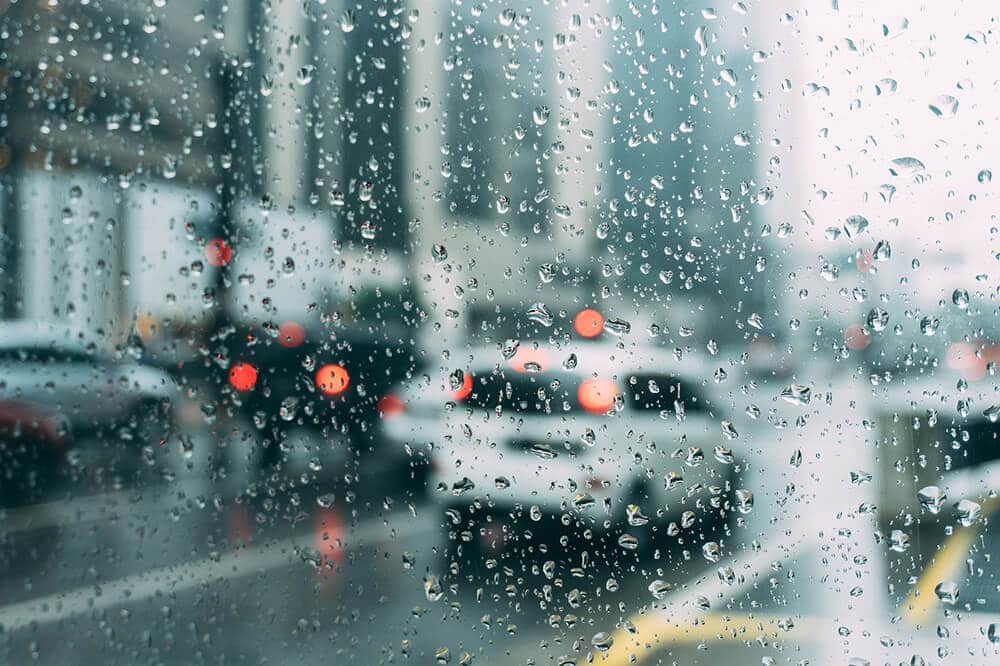
On average, over one-fifth of vehicle crashes are caused by weather. Rain—which decreases visibility and makes road surfaces slippery—statistically increases the chances of car accidents, truck accidents, motorcycle accidents, and even bicycle accidents. When rain is involved in high-speed travel, an accident that may have been less severe on a clear day can turn deadly. Bad weather is one of the most common causes of car accidents resulting in fatality.
Safety Tips for Driving in the Rain
It may be surprising to know that rain and wet roads cause more accidents than ice and snow. While summer rainstorms may seem less dangerous than winter snowstorms, the combination of heat and water draws oil out of asphalt and makes road surfaces extremely slippery.
The following safety tips can help you prepare before a trip, and know what to do if you get caught in the rain.
Preparing Before a Trip
- Check weather reports and try to plan trips for times it is not raining.
- Whenever possible, delay a trip if it seems like rain will be a problem.
- Plan to drive while it is light out. Driving in the rain is more dangerous when traveling at night.
- Try to avoid driving unfamiliar roads in the rain.
- Keep windshield wipers in good condition. The AAA recommends changing them every 6-12 months.
- Check the tread of your tires. Bald tires can lead to slipping on wet roads.
- Ensure that all lights are working properly so you can see and be seen in the rain.
- Maintain your car well and do regular checkups. No one wants to break down in the rain.
If You Get Caught in the Rain
- If it feels unsafe, pull over in a safe place and wait with your hazard lights on until rain passes.
- Slow down. The posted speed limit is intended only for the best driving conditions.
- Use headlights, and use flashers if travelling under the speed limit.
- Be sure to defog your windows for best visibility.
- Don’t make any sharp or sudden turns. Take curves slowly.
- Be prepared for longer braking distances. Keep space between you and the car in front of you.
- Don’t use cruise control. You need to be able to maintain control and adjust your speed.
- Hydroplaning is a serious issue. Brake gently, drive slowly, and avoid standing water.
Things Never to Do When Driving in the Rain
Some things just don’t mix with driving. And when rain is added into the picture, these dangerous driving behaviors are much more likely to lead to an accident or even fatality. While it may seem like common sense, these actions have, in fact, led to car accidents. It’s good to continually remind ourselves that these things should never be done while driving in the rain:
- Speeding
- Drinking or abusing drugs
- Texting
- Eating
- Videoconferencing
- Personal grooming
- Turning to talk to others in the car
- Watching videos
- Engaging in any other activity that takes your eyes and mind off the road
These are dangerous driving activities on even the clearest, brightest days. While it may be tempting to answer a quick text message or drive a bit faster to get to work on time, don’t put yourself or others at risk. Distracted driving in the rain is an irresponsible choice that often has irreversible consequences.
Is Driving at the Speed Limit Safe in Heavy Rain?
What is a safe speed? Is the speed limit always right? Posted speed limits can only tell you what the maximum safe driving speed is under the ideal road, traffic, and weather conditions. If there is a traffic jam, accident on the shoulder, debris on the road, heavy rain, or any other factor which could make driving more dangerous—slow down. It is still considered speeding when you are driving too fast for conditions, even if that speed still falls under the posted speed limit.
Pavement can become slippery 10-15 minutes after it begins to rain. Here are some tips to help you know when to slow down in the rain. When it’s raining, slow down if any of the following hazards apply:
- Roads are slick or slippery
- There is standing water on the road
- Visibility is limited for any reason
- There is danger of animals or pedestrians
- You feel your car beginning to hydroplane
- Glare from oncoming headlights makes it difficult to see
- There is fog on the road
- Roads are winding, have sharp turns, or are poorly maintained
- Any other conditions which make driving more difficult than a normal day
What Should I Do If My Car Starts to Skid?
Skidding is a major concern when driving in the rain. When a car starts to skid on a slippery road surface, many people’s first reaction is to panic. As difficult as it may be in the moment, do your best to steady your emotions. It’s important that you don’t let your fear dictate your body’s actions.
While the knee-jerk reaction may be to fight the skid, the safest way to handle the situation is to ease into the skid to gently guide your car out of it. The following tips can help:
- Remain calm.
- Don’t slam on the brakes, hit the accelerator, or jerk the steering wheel.
- Release both the brake and accelerator while gently steering.
- Look in the direction you want to go while smoothly guiding the steering wheel.
- Begin to slowly ease on the brake once the car is under control.
- Straighten the wheels as needed.
- Accelerate and brake in turn carefully as needed to regain control of the vehicle.
Do Lawyers Handle Rain-Caused Driving Accidents?
An experienced car accident attorney will have handled many cases involving weather-related vehicular collisions. At DiPiero Simmons McGinley & Bastress, PLLC, we have worked with countless car accident victims who have been injured in every kind of auto crash imaginable. Although rain can’t be controlled, a driver’s response to it can.
It is the unfortunate fact that driving—although a necessary and integral part of many of our lives—is a dangerous activity. Each year, thousands of people are injured or killed because others do not respect the peril that careless driving poses. It is the mission of car accident lawyers to make sure that no injured party is made to bear the physical, emotional, and financial burden that another party’s negligence caused.
If you have questions about West Virginia car accident law, contact our office today. We will work with your schedule to set up a free consultation about your case.







